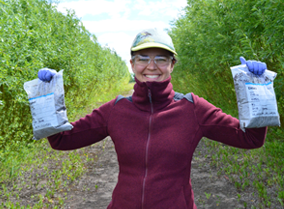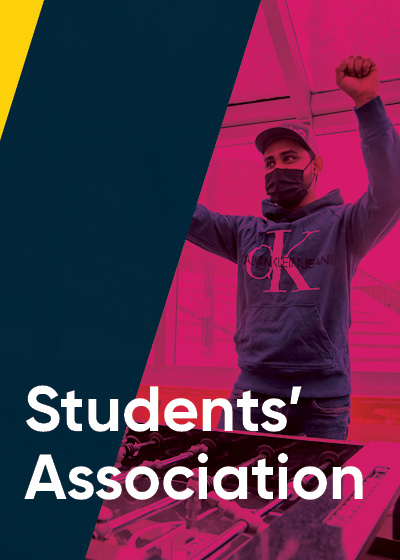News Archives: "Greene" Initiatives at GPRC: Introducing Environmental Scholar Chelsey Greene
Monday, August 13th, 2018

Chelsey Greene has always felt taking care of the earth was “the right thing to do.” As a former environmental consultant and current Master of Science candidate at the University of Waterloo, Greene is passionate about sustainability and environmental issues.
Greene’s studies at the University of Waterloo and her work on various land reclamation projects led her to connect with the Alberta Rural Organic Waste to Resources Network (AROWRN, pronounced “arrow-in”) in 2017. Headed by a group of eco-minded researchers like Greene, AROWRN began as a result of a partnership between a number of entities, including GPRC, Natural Resources Canada, Alberta Innovates Bio, and municipalities across Alberta.
“The interest and commitment of the municipalities is what made the project so successful,” said Richard Krygier, Researcher with Natural Resources Canada. AROWRN now represents a province-wide effort to put municipal wastewater to work in a creative, environmentally-friendly way.
AROWRN’s objective is to repurpose treated wastewater to irrigate agricultural crops, especially willow trees.
“Willows grow very quickly, with harvests every two to three years, and they can use large volumes of wastewater. The wood can be used for heating municipal buildings, as in the case of Camrose County, or as a feedstock for new technologies resulting from the growth of the bioeconomy,” said Krygier.
Greene identified immediately with the AROWRN mission and felt inspired to contribute to the project. She says the process could be applicable anywhere there are urban areas nearby agricultural fields. “It’s especially helpful for small towns and hamlets that don’t have the tax base for extensive wastewater treatment systems,” Greene said. “It’s a low-tech, low-cost system that can be applied pretty much anywhere.”
Greene’s focus is on carbon sequestration, the process by which carbon dioxide is absorbed by plant matter and photosynthesized to be stored in the soil, often for decades or longer. Human activity that disturbs soil, such as housing development or deforestation, has the effect of releasing trapped carbon back into the atmosphere, contributing to the greenhouse gas effect. Greene has been monitoring soil carbon on and around the willow plantation at AROWRN’s Beaverlodge irrigation site to see how efficiently the willow trees are sequestering carbon.
“There is now real economic value tied to decreasing the carbon in the air and sequestering it,” said Greene. “It’s important to be able to calculate and demonstrate what the carbon credit potential is for these types of projects.”
“Most of the work with AROWRN so far has been around establishing the willow plantations,” said Dr. Andrew Dunlop, Interim Director of Research and Innovation at GPRC. “There are still questions around what ecological benefits occur as the plantations produce over the longer term. Chelsey’s work can help answer those questions.”
Humans have often looked to complex technologies and engineering to solve difficult problems like climate change, but Greene believes the power of simple, natural solutions should not be underestimated.
“We have to reconnect with nature to access those solutions that have always been there.”












